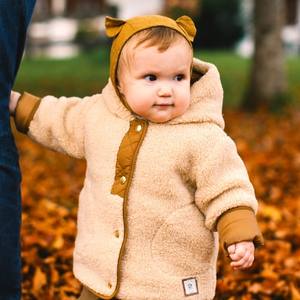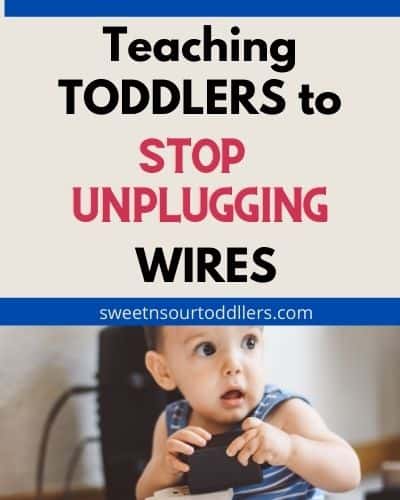“My toddler won’t wear a coat and it’s freezing outside. Help!”
Does your toddler always put up a fight when it comes to wearing a coat? You’re certainly not alone.
Getting little ones to bundle up for chilly weather can be a daunting task for parents everywhere.
I live in Canada and it’s freezing outside most of the time. It’s literally a daily battle to get my kids to put on their coats or jackets.
After having experimented with multiple tactics (many of which have failed!), I have finally understood that these certain tactics actually work.
In this article, we’ll take a deep dive into the surprising reason behind your toddler’s refusal to wear coats. Then we’ll go over practical strategies that will transform the coat battles into stress-free moments.
It’s time to put an end to the tantrums and embrace a winter wardrobe that both you and your toddler can agree on. Let’s dive in!
This post is about why your toddler won’t wear a coat and what to do about it.
Why Your Toddler Won’t Wear a Coat or Jacket & What To Do About It
This post contains affiliate links. As an Amazon Associate I earn commission for qualifying purchases.

Understanding Sensory Preferences
One of the key reasons why your toddler won’t wear a coat is due to sensory preferences.
Toddlers are highly sensitive to touch, and certain materials or textures can be uncomfortable or overwhelming for them.
The feeling of a coat’s fabric against their skin might cause irritation, itchiness, or even a sense of constriction. This sensory discomfort can trigger their resistance and lead to full-blown coat battles.
Sensory sensitivity is a common issue among children, and can manifest in a variety of ways. One common manifestation is a reluctance or refusal to wear certain types of clothing.
samsensoryclothing.com
Solution:
To better understand your toddler’s sensory preferences, it’s important to pay attention to their reactions when it comes to clothing.
Notice if they have a strong reaction to specific fabrics, labels, or textures.
Some children may prefer softer, smoother materials, while others might be more comfortable with looser fits.
By observing their responses, you can start to identify the types of materials or styles that your child may be more inclined to wear.
Once you’ve gained a better understanding of your toddler’s sensory preferences, you can take steps to tailor their winter wardrobe accordingly.
Look for coats made from softer fabrics or with smoother linings that are less likely to cause irritation.
Puffer jackets like the one below are warm and also lightweight and are a favorite with toddlers.
Simple Joys by Carter’s Toddlers and Baby Girls’ Puffer Jacket
Amazon Essentials Babies, Toddlers, and Boys’ Heavyweight Hooded Puffer Jacket
Consider options with looser fits or adjustable features that allow your child to find a level of comfort that suits them. By catering to their sensory needs, you can create a more pleasant and tolerable coat-wearing experience for your little one.
RELATED POSTS:
7 Genius Strategies to Handle a Toddler Climbing The Table
Toddler Won’t Wear Mittens – 7 Smart Hacks That Work
Toddler Wont Hold Hands – 6 Clever Strategies You Should Try
Involve Your Child in the Decision Making Process
In addition to material choices, it can also be helpful to involve your toddler in the decision-making process.
Allow them to touch and feel different coats, offering them a sense of control and autonomy.
Encourage them to express their preferences and listen to their input. By giving them a say in selecting their winter attire, you not only honor their sensory preferences but also empower them to take ownership of their clothing choices.
Children, when cognitively able, should be involved in decisions about their care.
healthychildren.org
Offering Alternatives
Toddles can get really stubborn. Sometimes it’s best to offer them alternatives if they are being extra cranky about wearing winter wear.
One option is to explore different coat styles or designs that align with their interests. If they love dinosaurs, find a coat with a dinosaur print or a hood that resembles a dinosaur’s head.
If they have a favorite color, look for a coat in that shade. By incorporating elements that appeal to your child, you can increase their excitement and willingness to wear a coat.
Additionally, you can offer alternative types of outerwear that still provide warmth and protection against the cold.
If your toddler strongly dislikes the feeling of a heavy coat, consider alternatives such as fleece jackets or vests, which may be more comfortable for them.
Layering can also be a useful strategy, allowing your child to wear multiple lighter layers instead of one thick coat.
By presenting these alternatives, you can give your toddler options that cater to their sensory preferences and make the process of getting dressed for the winter weather more enjoyable.
Toddler Won’t Wear Warm Clothes – What You Can Do About It
Making It Fun
In addition to offering alternatives, making the process of wearing a coat fun can greatly improve your toddler’s willingness to put it on.
By incorporating playfulness and imagination, you can transform getting dressed into a positive and enjoyable experience.
Consider turning the act of putting on a coat into a game, pretending to be superheroes or characters from their favorite story.
Encourage them to dress their favorite stuffed animal or doll in a matching coat, allowing them to feel a sense of camaraderie and connection.
By infusing fun into the routine, you can create positive associations with wearing a coat and reduce resistance.,
Making getting dressed an enjoyable experience not only enhances your toddler’s cooperation but also sets the stage for the next step in overcoming their resistance: setting a good example.
Toddler Winter Wear – Bestselling Products on Amazon:
Fleece Baby Bunting Bodysuit – Infant One Piece Kids Hooded Romper Outerwear Toddler Jacket
Kids Wool Socks for Toddlers Boys Girls Warm Winter Thick
Carter’s Little Girls Hw Snowsuit
Setting a Good Example
As parents, we have a powerful influence on our children’s behavior and attitudes. Toddlers learn by observing and imitating those around them, and this includes how we approach everyday tasks like getting dressed.
This is where setting a good example comes into play.
When your toddler sees you wearing a coat without any fuss or resistance, it sends a clear message that wearing a coat is a normal and necessary part of getting ready to go outside.
They will begin to understand that this is something everyone does and that it’s not something to be feared or avoided.
It’s important to remember that children are highly perceptive and sensitive to our actions.
They pick up on our attitudes and emotions, so if we approach wearing a coat with frustration or impatience, they are more likely to mirror those feelings.
On the other hand, if we approach it with enthusiasm and a positive attitude, they are more likely to follow suit.
So, when it’s time to put on your own coat, make a conscious effort to demonstrate that it’s both a practical and enjoyable part of the routine.
Show your toddler how you put your arms through the sleeves, zip it up, and even add some playful commentary like, “Look, my coat is giving me superpowers!”
By making it a fun and relatable experience, you can help your toddler feel more comfortable and willing to put on their own coat.
This post was about why your toddler won’t wear a coat and what to do about it.
Conclusion
In conclusion, understanding the sensory preferences of your toddler is key to unraveling the mystery behind their refusal to wear coats.
By offering alternatives, making it fun, and setting a good example, you can transform coat battles into moments of warmth and comfort.
Remember, it’s not just about the coat, but about fostering an environment where your toddler feels heard and understood.
So take action now and embrace these strategies to keep your little one cozy in colder weather. As the wise saying goes, “It’s not the coat that warms the child, but the love that surrounds them.”
Here are some other posts on common toddler parenting delimas:
5 Genius Strategies to Stop Your Toddler Slamming Doors
6 Ingenious Ways to Stop a Toddler from Jumping on the Couch
6 Fascinating Reasons Why Toddlers Draw on Walls (And How You Can Stop Them)





Leave a Reply